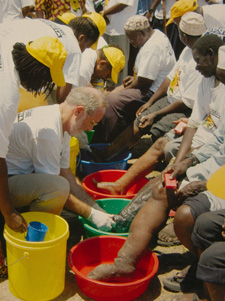National Deficit Outlook Unchanged Under Obama: UMD Policy Analysis
Public Policy’s Philip Joyce Offers Election Policy Fact Check
COLLEGE PARK, Md. – From a public policy point of view, the national debt accumulation since President Obama took office is largely a result of policies put in place prior to his inauguration, says a new analysis by University of Maryland expert Philip Joyce. He adds that Obama’s policies will make little impact in the debt over the next decade.
“The best that can be said about presidential fiscal policies thus far is that they would slow the bleeding, but they neither would stop it nor would they do much to heal the patient,” Joyce says.
The size of the debt has been one of the biggest issues of the presidential campaign, with Republicans arguing that the President has allowed the debt to rise out of control and Obama saying that he inherited the policies that led to an increase in debt and deficits. (more…)

